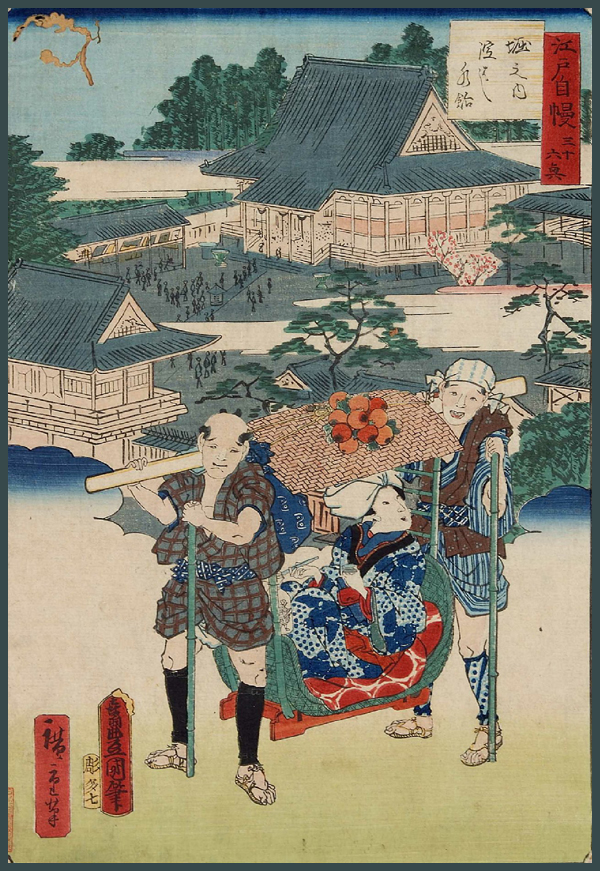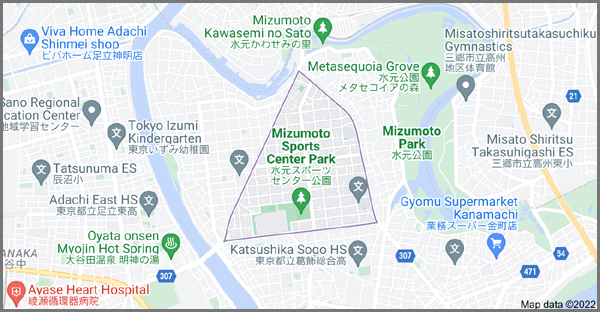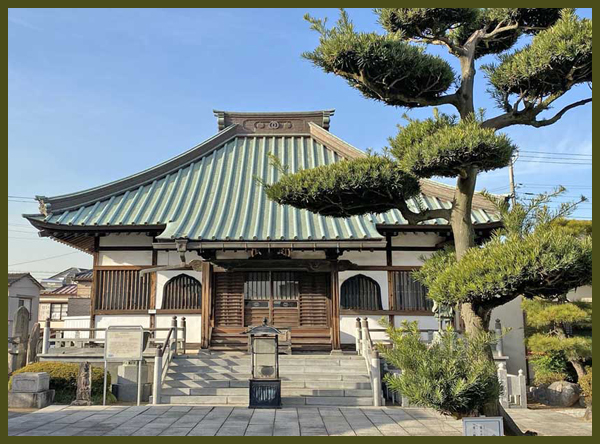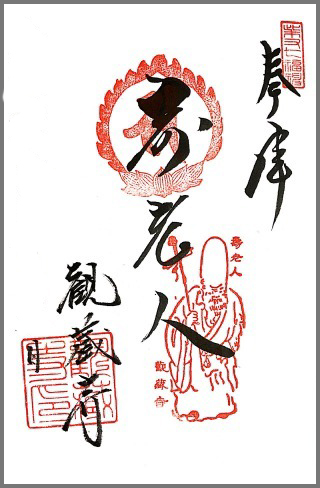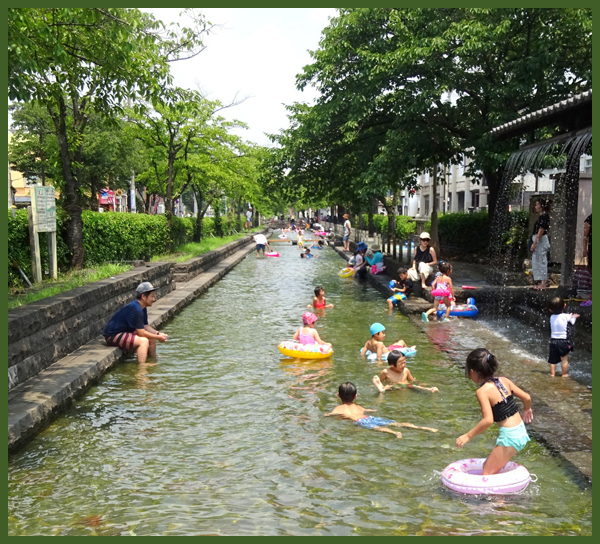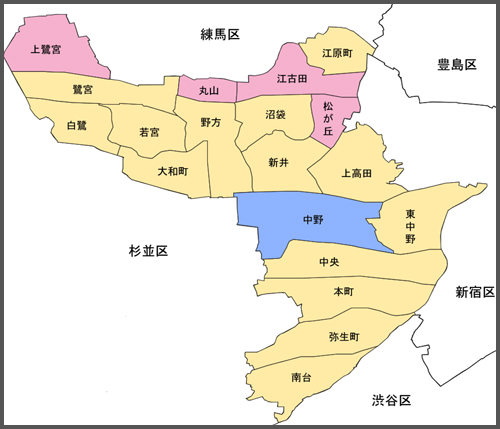[ . BACK to DARUMA MUSEUM TOP . ]
. Famous Places and Power spots of Edo 江戸の名所 .
::::::::::::::::::::::::::::::::::::::::::::::::::::::::::::::::::::::::::::::::::::::::::::::::::::::::::::::::::::::::::::::::::::::::::::::::::::::::::::::::::::::::::::::::::::
Oomiya, Ōmiya 大宮 Omiya in Saitama
- quote wikipedia
Ōmiya (大宮区, Ōmiya-ku) is one of ten wards of the city of Saitama, in Saitama Prefecture, and is located in the northeastern part of the city.
Although Urawa-ku is the governmental center of Saitama City, Ōmiya-ku is the most active commercial and business centre in both Saitama City and Saitama Prefecture thanks to its transport infrastructure, especially railways connected at Ōmiya Station.
- - - - - History
Ōmiya derives its name from a famous Shinto shrine,
the Hikawa Shrine, which has been a place of pilgrimage since at least the Heian period.
During the Edo period, the area flourished as
Ōmiya-shuku, a post station on the
Nakasendō highway, which connected Edo with Kyoto.
Following the Meiji restoration, it became part of Urawa Prefecture which merged with Iwatsuki, Urawa, and Oshi Prefectures in 1871 to form Saitama Prefecture. The modern town of Ōmiya was officially created within Kitaadachi District, Saitama with the establishment of the municipalities system on April 1, 1889.
On November 3, 1940 Ōmiya merged with the neighboring villages of Mihashi, Osato, Miyahara and Nisshin and was elevated to city status. Ōmiya continued to expand after the end of the war, absorbing the villages of Sashiougi, Mamiya, Uemizu, Katayanagi, Haruoka, and Nanasato on January 1, 1955.
On May 1, 2001 Ōmiya merged with Urawa and Yono to form Saitama City. In April 2003 Saitama became a city designated by government ordinance, and now the area of former Ōmiya City was divided between
Kita-ku (north), Minuma-ku (east), Nishi-ku (west), and Ōmiya-ku (south).
- source : wikipedia
. Musashi Ichi no Miya 武蔵一の宮 - Hikawa Jinja 氷川神社 .
Saitama 埼玉県さいたま市大宮区高鼻町一丁目407番地 / Saitama, Omiya Ward, Takahanacho, 1-407
Ōmiya-shuku 大宮宿 Omiya Postal Station was Nr. 4 on
. Nakasendoo 中山道 The Nakasendo Highway .
::::::::::::::::::::::::::::::::::::::::::::::::::::::::::::::::::::::::::::::::::::::::::::::::::::::::::::::::::::::::::::::::::::::::::::::::::::::::::::::::::::::::::::::::::::
- quote -
Ōmiya Hachimangū 大宮八幡宮 Shrine Omiya Hachimangu
Ōmiya Hachimangū Shrine, also called Wada Hachimangū, was built by
Minamoto no Yoriyoshi
in 1063 (the sixth year of Kōhei),
on his way back from the Early Nine Years' War, as a branch of Iwashimizu Hachimangū Shrine in Kyoto,
which was closely associated with the Minamoto Clan.
- source : Tokyo Metropolitan Museum -
. Minamoto no Yoshiie Hachimantaro 源八幡太郎義家 / 源義家 (1039 - 1106) .
- quote -
Kurakake no matsu 鞍掛松 saddle-hanging pine tree
There is a pine tree with the bent trunk on the approach to
Ōmiya Hachimangū Shrine.
Legend has it that when Minamoto no Yoshiie hung his horse saddle on a branch of this pine tree
on his way to conquer Ōshū and so it was called "Kurakake-no-Matsu" (saddle-hanging pine tree).
- source : Tokyo Metropolitan Museum -
- quote -
Kurakake no matsu
The stocks of the Minamoto Clan had risen immensely since the end of the Former Nine Years War in 1063. Lead by the astonishingly capable warrior, Minamoto no Yoshiie, the Minamoto rose with military power and earned the right to rule over the northern provinces of Japan.
But success brings with it its own trials and the Kiyowara, once allies of the Minamoto twenty years earlier in the Former Nine Years War, had begun proving themselves poor stewards in the north. Agitating against Minamoto rule far from Kyoto, house Kiyowara earned the ire of Minamoto no Yoshiie. Now known as Hachiman-taro - the Son of the God of War - the Kiyowara would soon have a fight on their hands.
Travel by horseback was convenient, but also tiring and on his way, Yoshiie stopped to rest in the area now known as Suginami City. Unsaddling his ride, Yoshiie found a pine tree on which to hang the saddle and allow his horse to rest. While peaceful for the moment, the subsequent three years would see some savage warfare in the distant north. Minamoto no Yoshiie would eventually emerge victorious, but on that day, in Suginami, the legendary warrior would rest, his future unknown.
With its twisted trunk bending towards the sky, Kurakake no Matsu - the saddle-hanging pine tree - lies on the road to Omiya Hachimangu Shrine in Tokyo's Suginami City. Surrounded by homes, roads and telephone poles, this lone pine tree has hundreds of years of legend behind it, a living memorial to one of Japan's most legendary sons.
- source : japantravel.com/tokyo... -
::::::::::::::::::::::::::::::::::::::::::::::::::::::::::::::::::::::::::::::::::::::::::::::::::::::::::::::::::::::::::::::::::::::::::::::::::::::::::::::::::::::::::::::::::::
. Japanese Legends - 伝説 民話 昔話 – ABC-List .
................................................................................. Saitama 埼玉県
. お六所様 Deity O-Rokusho Sama. .
and the first
unohi, u no hi 卯の日 day of the rabbit in the 5th lunar month
.......................................................................
Saitama 大宮市
Omiya city
. Kappa no myooyaku 河童の妙薬 Myoyaku special medicine of Kapa .
When Kappa wants to apologize for his bad deeds, he teaches the farmer how to prepare special medicine.
- - - - -
. karasu 鴉 / 烏と伝説 legends about the crow, raven .
If
karasu からす a crow sits on the tree of a home, a family member will have misfortune.
If
karasu からす a crow craws on a
kaki no ki 柿の木 persimmon tree, a person living nearby will become ill.
- - - - -
. yao bikuni 八百比丘尼 a nun for 800 years .
The name of 櫛引町 Kushibiki town, Nisshin Village dates back to a visit of 八百比丘尼 a Yao bikuni nun.
She came to the village and planted two
enoki 槻 zelkova trees.
But the trees have dried and died.
One more similar legend about the Yao Bikuni nun from 武蔵国足立郡波田村 Hata Village.
.......................................................................
Saitama 大宮市
Omiya city 上小町
Kamiko town
. Kubikiri Jizo 首切地蔵 Jizo with his head cut off - .
Jizo posed as a substiture for a human.
.......................................................................
Saitama 大宮市
Omiya city 吉敷町
Kishiki town
azuki baa, azuki babaa 小豆婆 old Hag washing Azuki beans
In the evening, the sound of someone washing beans can be heard from the nearby river.
(This story is told in many parts of Japan.)
. azuki arai 小豆洗い washing red Azuki beans .
- - - - -
. shio Jizo son 塩地蔵尊 Jizo made from salt .
If people come with an offering of salt, their wish will be granted.
.......................................................................
Saitama 大宮市
Omiya city 植水村
Uemizu village 水判土
Mizuhata
. yao bikuni 八百比丘尼 a nun for 800 years .
In the hamlet of Mizuhata, there is a story abuot a nun for 800 years.
At 慈願寺 the
Temple Jigan-Ji there is a small golden statue called
kotobuki Jizo 寿地蔵
Jizo for Longevity.
It is a protector deity for nuns.
Jizo statue in the compound
There is also 水波田観音
Mizuhata Kannon Bosatsu at 慈眼寺(じげんじ) Jigen-Ji.
.......................................................................
Saitama さいたま市
Saitama city
. Samuhara jinja サムハラ神社 Samuhara Shrine .
and a gun specialist from Kishu.
..............................................................................................................................................
- reference : nichibun yokai database -
. Edo, Tokyo 江戸 - 東京 - 伝説 Legends Index .
::::::::::::::::::::::::::::::::::::::::::::::::::::::::::::::::::::::::::::::::::::::::::::::::::::::::::::::::::::::::::::::::::::::::::::::::::::::::::::::::::::::::::::::::::::
 - - - To join me on facebook, click the image !
- - - To join me on facebook, click the image !
:::::::::::::::::::::::::::::::::::::::::::::::::::::::::::::::::::::::::::::::::::::::::::::::::::::::::::::::::::::::::::::::::::::::::::::::::::::::::::::::::::::::::::::::::::::
. Kaido 街道 Highways - ABC Index .
. Famous Places and Powerspots of Edo 江戸の名所 .
. Edo bakufu 江戸幕府 The Edo Government .
. Japanese Architecture - The Japanese Home .
. Legends and Tales from Japan 伝説 - Introduction .
[ . BACK to DARUMA MUSEUM TOP . ]
[ . BACK to WORLDKIGO . TOP . ]
- - - - - ##omiya #oomiya ##saitama #saitama - - - -
::::::::::::::::::::::::::::::::::::::::::::::::::::::::::::::::::::::::::::::::::::::::::::::::::::::::::::::::::::::::::::::::::::::::::::::::::::::::::::::::::::::::::::::::::::




